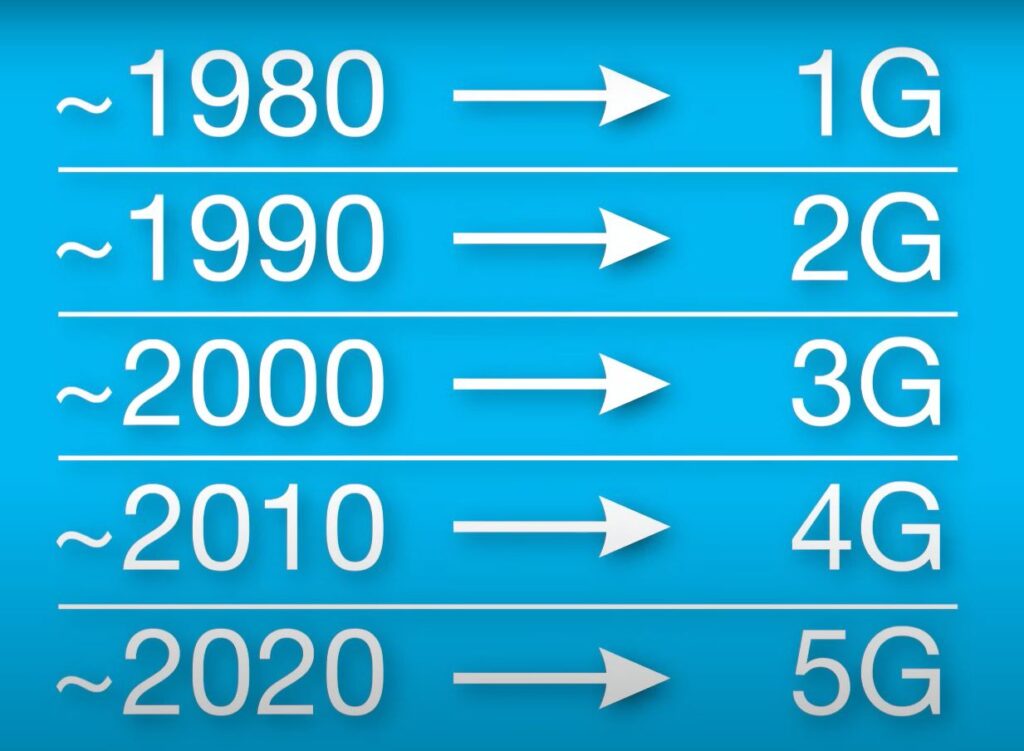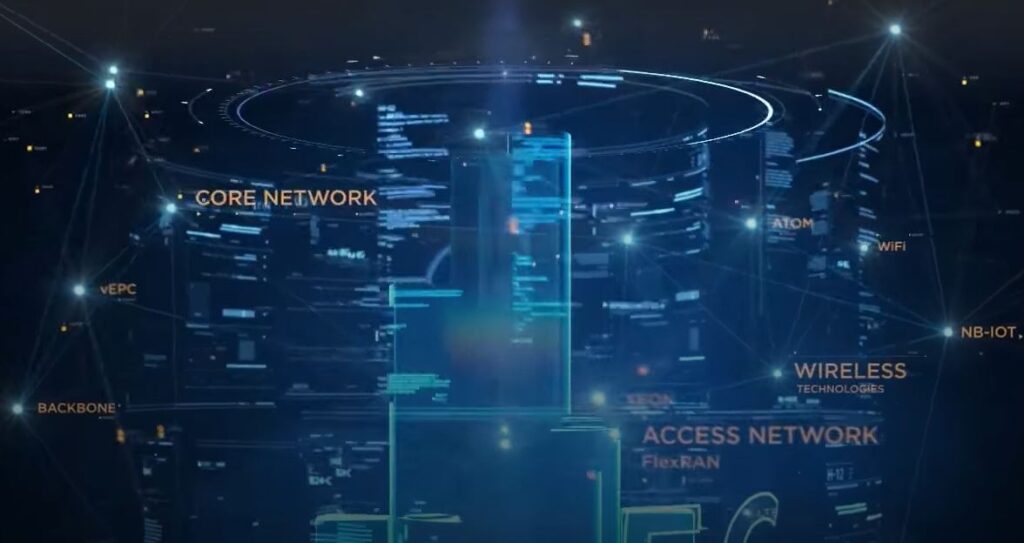In 2019, mobile network operators (MNO) began deploying 5G networks. The term “fifth generation” of mobile technology is represented by the acronym 5G. This is 4G LTE‘s replacement. Compared to its predecessors, the new network offers faster speeds, larger bandwidths, reduced latency times, and more sophisticated security features.

5G speed: What is the 5G speed?
Peak download and upload speeds of up to 20 Gbit/s and 10 Gbit/s, respectively, are anticipated for 5G networks. However, in actuality, download speeds average 100 Mbit/s, while upload speeds average 50 Mbit/s.
Comparatively, 50 Mbit/s for uploads and 150 Mbit/s for downloads are the maximum theoretical data speeds for 4G LTE. This is with a 20 Mbit/s download speed and a 10 Mbit/s upload speed on average.
Put differently, 5G has an average data speed that is five times faster than 4G. It is possible to reach speeds that are more than 100 times faster in theory. Additionally using less power. This makes 5G intriguing for Internet of Things applications like digital healthcare, intelligent agriculture equipment, factory automation and self-driving cars in addition to entertainment.
The 5G network provides reduced latency times
The time it takes for requests and answers to be sent across a network from one device to another is known as latency. The average latency in a 5G network is approximately four milliseconds. This value may even decrease to one millisecond, depending on the application. In contrast, the latency is more like 50 milliseconds over a 4G connection. As a result, 5G has latency that is more than ten times lower than 4G.
What is 5G networks’ bandwidth?
5G networks are capable of providing connectivity at three different frequencies: low, below 1 gigahertz (GHz), medium, between 1 and 6 GHz, and high, between 6 and more than 100 GHz. Commercial 4G networks, in contrast, employ frequencies in the 600 MHz–3 GHz range.
Additionally, both licensed and unlicensed frequency bands are used for connections by 5G network devices. This gives service providers greater freedom in utilizing the entire radio frequency spectrum. In a shared cell, this guarantees more reliable connectivity for more devices.
What difficulties does 5G present?
For over a decade, 4G has been accessible. Mobile network providers have constructed enormous 4G infrastructures during that time, and creative thinkers have addressed 4G’s drawbacks. Although 5G brings with it new challenges, it also brings new opportunities.
Reduced coverage
Although the significantly higher frequencies enable faster data speeds, utilizing 5G will pose new challenges for engineers. Shorter wavelengths are found at higher radio frequencies. They are therefore unable to proliferate as widely.
This implies that in order for a mobile operator to grant access to these radio frequency bands, the “cells” of a 5G mobile network must be smaller. Less coverage is provided by the additional infrastructure needed for 5G networks.
Higher frequencies also have poorer indoor coverage because it is harder for them to enter buildings. Although indoor applications frequently cannot use the higher bands, 5G can also use the low and mid-frequency bands.
No 5G in rural areas yet
Large cities are the best places to use 5G connectivity because there is a higher density of mobile devices there, as well as a greater need for fast, low-latency internet. However, the infrastructure needed for widespread 5G coverage will take some time to be built by mobile network operators.
Nonetheless, 5G technologies are beginning to be incorporated into Low Power Wide Area Networks (LPWANs), such as LTE-M and Narrowband IoT (NB-IoT). Greater 5G coverage will be made possible by Massive Machine-Type Communication (mMTC), the 5G evolution of NB-IoT and LTE-M.
IoT challenges for 5G
Tens of billions of new connected devices and more sophisticated cellular IoT applications will be possible with 5G connectivity. The volume and capabilities of internet-enabled devices are increasing dramatically, which will continue to present security challenges for IoT. Thus, the question “Is 5G dangerous?” comes up often.

An application can act as a gateway to an end user’s other connected devices by utilizing any connected device. Unauthorized access to data is becoming more and more likely as IoT devices gather and utilize more data. It could be done to build a botnet or use DoS attacks to take down the network.
In actuality, compared to other network types, 5G networks’ new security features make connectivity more secure. For instance, mutual authentication, end-to-end encryption of all network traffic, and the encryption of international mobile subscriber identities (IMSIs).
Cost increases
IoT manufacturers have a greater selection of modems at lower prices the longer the network has been operating and the simpler the underlying technology. In order for 5G devices to connect to 5G networks, advanced modems and modules are needed. This may significantly raise the price of your development. On the other hand, 5G mMTC will be substantially less expensive than other 5G technologies and is especially made for cellular IoT.
Satellite interference
An issue that has never before come up for manufacturers and mobile operators is the ability to access higher radio frequencies. They share the same bandwidth as satellites, which we rely on to forecast the weather. The use of these radio frequency bands, scientists have cautioned, may have a substantial impact on our capacity to precisely track, measure, record, and forecast the weather.
However, as shown by the Federal Communications Commission (FCC) and mobile operators, the deployment of beamforming technology and the concentration of 5G networks in urban areas will render this possible interference negligible.
When will everyone have access to 5G?

The majority of large mobile operators have already constructed 5G networks and distributed millions of 5G-capable smartphones. However, 5G service is currently primarily restricted to large cities. In hundreds or thousands of cities, some operators have already deployed 5G, albeit in low-frequency bands.
In a few years, 5G coverage in low frequency bands should be available across the country; high-speed 5G connection rollout will take longer.
Is 5G connectivity appropriate for your company?
Years will pass before 5G reaches its full potential. On the other hand, this also implies that 4G LTE networks will continue to operate for a very long time. However, it’s beneficial to comprehend what makes this technology unique and how it will influence mobile connectivity going forward for both IoT manufacturers and consumers.
Global high-speed internet connectivity is significantly enhanced by 5G networks. An unprecedented revolution in the Internet of Things (IoT) will be possible with 5G networks, partly because of their distinct architecture. A greater number of devices will be able to operate in close proximity without interfering with one another thanks to increased bandwidth and more effective use of the frequency spectrum. The next big thing in cellular connectivity is 5G. IoT-specific features are part of 5G, but LPWANs like LTE-M and NB-IoT already have all the necessary solutions. There are other cellular networks that might be more appropriate for your needs, unless your use case calls for extremely high data throughput and low latency.